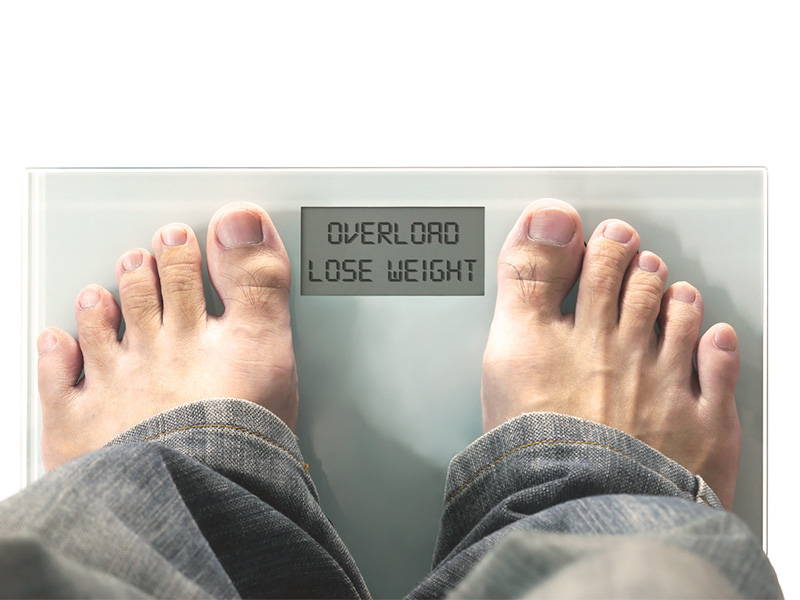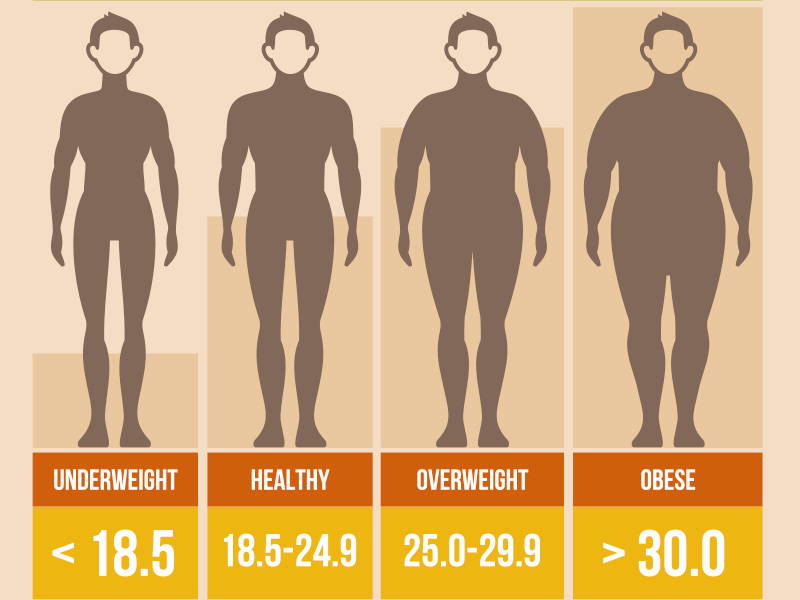
Body Composition Definition & Why It Matters
Key Takeaways
- The human body is about 60% water. The remaining 40% consists of bones, fat mass, and lean mass.
- Two people of the same weight and height can look completely different because of their unique body composition. A 180-pound athlete, for example, won’t look the same as a 180-pound sedentary person with high body fat levels.
- What matters most is your body composition, not the number on the scale. In fact, both the scale and the body mass index (BMI) are flawed and misleading as they cannot measure how much lean mass and fat you have.
- A healthy body composition can improve your looks and overall health. As an athlete, you should strive to build lean mass and keep your body fat levels within normal limits.
- From underwater weighing and DEXA to skinfold measurements, there are various ways to determine body composition. Choosing one depends largely on your budget. More advanced methods, such as DEXA, tend to be expensive and are rarely available to the general public.
We hear people saying “I want to lose some weight” or “I want to get bigger” on a daily basis. These statements, though, are incorrect. Unless you’re obese, you don’t want to lose weight, but fat mass.
The same goes for muscle building. What you want is to gain lean mass, not look like the Michelin Man.

Whether we’re talking about fat loss or hypertrophy, the end goal is to improve body composition. This term describes your fat-to-muscle ratio, but it also refers to the amount of water and bone mass in the body.
Do a quick online search for “body composition definition” and you’ll see what we mean. The scale tells only one part of the story — and so does the BMI, or body mass index. And that’s what we’ll discuss today.
Let’s take two different people of the same weight and height — a 200-pound sedentary man and a 200-pound male bodybuilder. They will look completely different from one another. The sedentary guy will likely be overweight or obese, while the athlete will have a lean, muscular body.
It’s their body composition that makes the difference.
Don’t Trust Your Bathroom Scale
Most people rely on the bathroom scale to measure their progress in the gym. Unfortunately, this often leads to frustration.
Imagine the following scenario: you eat clean and work out daily or every other day. Your clothes fit better and you feel lighter overall.
Obviously, you’d expect the scale to reflect all of your hard work. But when you step on it, you realize that your weight hasn’t changed at all. Worse yet, you’re heavier than before starting your diet and training plan.

This unwelcome surprise can put off anyone.
Our advice? Ditch the scale for a couple of weeks or even months.
Believe it or not, your bathroom scale might be wrong.
First of all, muscle is denser but takes less space than fat mass. Therefore, if you lift heavy, you’ll naturally build muscle and lose fat. However, the numbers of the scale might go up due to the increase in lean mass.
Second, what you eat a day before weighing yourself can affect these numbers. Carbs are often to blame.
Your body converts carbs to glucose —its main source of energy. Some of it is stored as glycogen in the liver and muscles. The excess is deposited as fat.
Each gram of glycogen is stored along with 3 grams of water. This explains why you’re heavier the day after eating a high-carb meal.
Likewise, high-sodium foods promote fluid retention. Some medications have this effect too. However, the extra weight comes from water, not fat.
As you see, you can’t trust the bathroom scale. What matters most is your body composition. From DEXA to hydrostatic measuring, there are better ways to determine your fat-to-muscle ratio.
Why BMI Is Flawed and Misleading
Like the bathroom scale, the body mass index (BMI) has long been used as a way to define normal weight, excess weight, underweight, and so on. It was invented back in the 1830s, but most health professionals nowadays agree that it’s flawed and misleading.

This method of body measurement is determined by your weight and height, notes Harvard Medical School. Just like the scale, it doesn’t take your sex, lean mass, and fat mass into account.
A normal body mass index ranges between 18.5 and 25. If your BMI is lower than 18.5, you’re considered underweight. A BMI over 25 means that you’re overweight, while 30 and up means you’re obese.
Life insurance companies and some medical professionals still use this measurement. A high BMI is typically linked to a greater risk of hypertension, diabetes, heart disease, sleep apnea, and other obesity-related disorders.
However, there are several problems with the body mass index:
- It doesn’t estimate your fat mass or lean muscle mass.
- It does not take your sex into account; for example, a man and a woman with the same body fat levels can have completely different BMIs.
- It doesn’t apply to athletes and fit individuals; a bodybuilder, for instance, can have a high body mass index despite carrying little body fat.
- It ignores your waist circumference, which is a strong indicator of abdominal obesity and its comorbidities.
- It doesn’t take your bone structure and fat distribution into consideration.
A research paper featured in the International Journal of Obesity explains these issues in detail.
Elderly people, for example, typically carry more fat and less muscle than younger adults. Yet, their BMI is significantly lower because this number fails to reflect the age-related changes in lean mass and body fat.
In a study conducted on over 5,000 people, 11% of subjects who were classified as overweight based on their BMIs had normal body fat levels. More than one-third of those who were of normal weight according to their body mass index had excess fat.
Is There an Ideal BMI for Athletes?
The BMI is even trickier for athletes and regular gym-goers as their muscle mass can put them in the obese range.

In one study conducted on athletes with a body mass index of 30 or higher, a staggering 72% were wrongly classified as obese. As the researchers note, skinfold measurements and waist-to-height ratios can help determine the amount of body fat with greater accuracy.
Gold medal-winning wrestler Artur Taymazov, for example, has a body mass index of 31. Yet, he carries less body fat than the average person.
Alexander Povetkin, Steve Williams, Shawn Crawford, David Cal and other elite athletes all have a BMI of 26 or higher, which would classify them as overweight. Not to mention bodybuilders and powerlifters! Now you see why the body mass index is so misleading.
This measurement doesn’t take lean mass, bone mass, fat mass, and other tissues into account. You can be extremely fit and yet fall into the obese range. What you should care about is your body composition.
Body Composition Definition — Find Out What You’re Made of
The human body is about 60% percent water, according to Oxford University Press. The remaining 40% consists of protein, fat, and minerals (accumulated in the bones). All of these variables affect your body composition and can be measured through various methods.

So what is body composition? Generally, this term is used to describe the proportion of fat and other tissues in the body. Your actual weight matters less.
Having a healthy body composition isn’t about being thin. What you actually want is to be fit.
When you lose weight, you lose both muscle and fat. However, being skinny doesn’t necessarily mean you have low body fat. We all have a friend or colleague who looks thin but has flabby arms and belly fat.
What matters most is to achieve a healthy muscle-to-fat ratio, which requires a balanced diet and regular exercise. If you focus on the numbers on the scale, you’ll end up being disappointed.
The Skinny on Body Fat
Total body fat consists of essential, visceral, and subcutaneous fat, each serving a different role.
Essential fat, for instance, insulates and protects your internal organs, among other functions. According to the University of New Mexico, minimum essential fat requirements are 5% for men and 8% for women.
Visceral fat, on the other hand, surrounds vital organs and produces inflammatory chemicals and hormones.

This type of adipose tissue accounts for about 10% of a person’s total body fat and is stored in the abdominal cavity. Too much of it can lead to diabetes, insulin resistance, heart disease, and premature death.
Subcutaneous fat is stored beneath the skin and makes up around 90% of body fat mass. Unlike visceral fat, it produces beneficial hormones, such as leptin and adiponectin. A large part of it is considered essential.
The average woman should strive for 18 to 30% body fat to maintain good health, points out the University of New Mexico. If you’re a man, try to keep your body fat levels between 10 and 25%. These recommendations don’t apply to athletes, though.
Athletes, whether we’re talking about bodybuilders, runners, or swimmers, typically have lower body fat levels because excess fat may affect their performance.
However, this doesn’t mean you should stay at 5% body fat year-round. Maintaining low body fat requires a caloric deficit, which would limit your ability to make gains.
And that’s why many bodybuilders and fitness pros go through bulking and cutting phases. Generally, they bulk up in the off-season to build mass and strength and then start cutting to lose fat.
What Is Fat-Free Mass?
As mentioned earlier, fat-free mass is an essential component of body composition. It consists largely of water and protein, which make up your muscles and vital organs, such as your liver and heart.
Fat-free mass also includes your bone mass, connective tissues, and water in the body. However, when it comes to body composition, it typically refers to the amount of muscle mass.

The fat-to-muscle ratio, or body composition, changes with age. Your diet, hormone levels, age-related muscle loss, and other factors all contribute to these changes. Unless you work out regularly, you’ll lose muscle and gain fat as you age.
Studies & Research
For example, a study published in the Journal of the American Geriatrics Society has found significant differences in body composition of people between age 60 and 95. Men over 80 years of age and older had about 7.3% less fat-free mass than those age 70 and younger.
But this doesn’t mean you can’t do anything about it. A high-protein diet combined with regular exercise may help slow down these changes and preserve lean mass, according to a 2019 review in the journal Nutrients.
Strength training is particularly beneficial as it helps build and maintain muscle mass while burning fat. Plus, heavy lifting balances your levels of testosterone and other hormones that promote hypertrophy.
These hormones also influence body composition.
For example, a study published in the Journal of Clinical Endocrinology and Metabolism has found that lean mass, muscle strength, and cardiorespiratory endurance increased in men treated with transdermal testosterone. At the same time, their body fat mass decreased.

As the scientists note, growth hormone (GH) supplementation may further enhance these outcomes.
Hormone replacement therapy (HRT) isn’t your only option, though. There are safer ways to increase your testosterone and GH levels without resorting to this method.
Try our all-natural testosterone booster and use these strategies to raise your T levels through diet and lifestyle changes.
How to Measure Your Body Composition
As discussed earlier, you cannot rely on the bathroom scale and BMI to measure body composition. However, there are plenty of other ways to determine how much muscle and fat you have. These include:
- Bioimpedance (BIA)
- Dual-energy X-ray absorptiometry (DEXA)
- MRI
- PET/computed tomography
- Air displacement plethysmography
- Underwater weighing (hydro-densitometry)
- 3D body scanner
- Skinfold measurements
- Circumference measurements
- Progress photos and the mirror
- Bod Pod
Each of these methods has its perks and drawbacks. Some are not widely available and come with a high price tag.
The easiest way to determine your body composition is to take weekly measurements with a skinfold caliper. This plastic device allows you to measure skinfold thickness in the abdominal area, chest, triceps, thighs, and other parts of your body.

With this method, you can estimate the thickness of your subcutaneous fat. Its main advantage is the low price and ease of use. A skinfold caliper costs just a few bucks and can be used at home.
Its accuracy depends largely on your skills. The error rates are typically higher than those of DEXA, underwater weighing, and other methods. For example, in one study, skinfold calipers underreported body fat levels in most subjects.
Bioimpedance
Bioimpedance, or BIA, is the technology used by modern bathroom scales and estimates body fat percentages. It works by passing a weak electrical current through your body. Although it has been proven reliable in cohort studies, it typically has less accuracy in individuals.
A more accurate method to measure your body fat levels is DEXA, or DXA. It uses X-rays to scan your body and determine the amount of lean mass, fat mass, and mineral content in various body parts.
The downside is that it’s only available in wellness centers, clinics, and hospitals.
Optimize Your Body Composition
Now that you know the body composition definition, you may wonder what to do next. Depending on where you live, you may or may not have access to DEXA and other methods of assessing body fat levels.
That’s ok — you can still get pretty accurate results with a measuring tape and skinfold calipers.
Start by taking progress photos. Do it every two weeks to one month and compare the results. If you lose fat, your pics will show it.

Another strategy is to choose a tight shirt or pants and try them out every few weeks. As you get leaner, your clothes will be looser and fit you better.
Adjusting Your Diet
Adjust your diet and workouts based on your progress. If you’re trying to build mass, stay in a caloric surplus and train for size. Check out our Get-Big Plan to see what it takes to get bigger and stronger.
Fill up on protein and quality carbs, lift heavy, and cut back on cardio. Use Old School Labs’ Hard Gainers Stack to boost your anabolic hormones, get the energy needed for intense training, and recover faster.
If your goal is to lose fat, stay in a caloric deficit and incorporate HIIT into your workouts. Consider switching to a low-carb or ketogenic diet to get your body into fat-burning mode. Intermittent fasting can help too, so give it a try!
Again, it’s important to maintain a high protein intake at all times. This nutrient is clinically proven to improve body composition, especially when used as part of a balanced diet and training plan.
Do you know your body composition? Have you ever tried the Bod Pod, DEXA, or other methods of measuring body fat percentage? Share your experience below!








